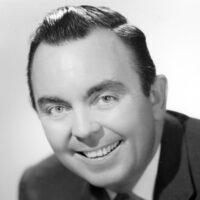
Through all our industries’ travails, I have maintained that people want the shared experiences that both radio and hit music provide. I went out to dinner on Monday night and was happy to hear that there was a Grammy discussion taking place at the next table. It’s Thursday now and the show is still dominating my Threads feed. However some people might have felt about Luke Combs covering Tracy Chapman at the outset, most people are now arriving at the realization that it was good to be brought together through music.
I came out of the holiday break bemused that nothing was bringing the audience together other than decades-old holiday songs. That article came on the heels of a Guy Zapoleon year end wrap-up headlined “2023 Marked Fourth Year of Worst Music Doldrums for Top 40 Radio.” I wondered if after four years, you could still call them doldrums. It felt more like The Wreck of the Gordon McLendon. Thinking of Top 40’s origin story, would Todd Storz now observe a waitress playing only “All I Want for Christmas” and “Rockin’ Around the Christmas Tree” over and over?
This year seems to be starting with less momentum. By February 8, 2023, “Flowers” by Miley Cyrus, about a month old, was a top 5 single with a gain of +3750 spins at Top 40 radio on its way to being the Grammys’ Record of the Year. None of this year’s new releases have that sort of momentum yet. Of the songs that have emerged since the holiday, the biggest grower this week is “Murder on the Dance Floor” by Sophie Ellis-Bextor. CHR’s uptempo hits are almost all retro-disco. It’s telling that this one helped invent the category 20+ years ago.
And yet, there are opportunities. Earlier this week, Alpha Media Executive VP of Content Phil Becker’s Linked-In post suggested that radio capitalize on being the only place to hear Taylor Swift (or Noah Kahan, or Sophie Ellis-Bextor) now that Universal Music Group is momentarily out-of-business with TikTok. I had suggested last year that broadcasters exert their brainpower toward replacing TikTok and Twitter. Maybe that’s wishful thinking, but couldn’t broadcasters already be offering to put listeners’ Morgan Wallen or Drake videos on their own YouTube playlist?
Beyond that, one wonders if this is the moment where both radio and labels come to an understanding that the current paradigm–TikTok and streaming as the determinant of what songs radio should even hear–is not working. The music industry has supposedly righted its own ship and yet we’ve had two major announcements of layoffs and consolidation in as many weeks. Believing that those realignments should end with an even greater focus on radio is probably as naïve sounding as my TikTok/Twitter scenario. But radio and labels do need each other.
I’ve also come to the belief in recent months that labels should be making AC radio part of their plans again. AC is the most successful of those formats with any presence of current music, rivaled only by Country’s uptick. The mother/daughter coalition that shared “Dynamite” and “Teenage Dream” is, if anywhere, now at AC enjoying “Uptown Girl” and “Everybody (Backstreet’s Back)” together.
AC radio has a footprint that Top 40 does not right now. Its reach is part of why holiday songs dominate at year-end. AC doesn’t find many new songs that it wants to play, but the songs that it can share with Top 40 become “As It Was” or “Flowers” or “Cruel Summer.” Being worked to AC quickly also made a No. 4 Hot 100 hit out of “Sunroof,” when some CHR/Hot AC-only consensus powers are lucky to reach the top 15 of that chart.
Is there any incentive for AC to play newer music again? The format is, after all, flourishing with very little recent music. To some extent, AC’s conservatism has been a self-fulfilling prophecy by asking CHR to do so much of the work, even though AC has more reach right now. So it’s been gratifying to see AC’s acceptance of the new Billy Joel single (as they should, given Joel’s continued currency there). And programmers’ longtime truism that listeners don’t turn 35 and automatically lose interest in new music likely still applies to a format that still wants to position itself as “yesterday’s hits, today’s favorites.”
If labels are willing to ask for the order earlier at AC, there will likely be more hits. Meanwhile, broadcasters should want as many of their formats to work in harmony as possible. At a time when only Country still has a relatively healthy new music eco-system, multi-format hits are what will drive a resurgence of shared listener experiences.
Nine months after Combs, Morgan Wallen, and Kane Brown all had pop hits simultaneously, some CHR programmers are now wondering if they went overboard on Country crossovers. You can see that in the response to Morgan Wallen’s “Thinkin’ Bout Me,” certainly big and pre-sold enough for CHR but facing more resistance than his last two CHR hits.
The advice offered at the outset of the Country crossover boom still stands. If there are enough hits and a wide enough range of styles, having three Country hits at a time shouldn’t be an issue. Top 40 isn’t any healthier for having only retro-disco or ethereal piano ballads. At a time when we have 18 consensus hits a year, there is room to roll deep with any category, as long as it’s not the only one.
Having a satisfying and higher-rated Grammy Awards show this year meant that there was much less doomscrolling among comments about “I don’t know who any of these artists are now” or “does anybody still care about awards shows. In the year following “Barbieheimer,” there is certainly an opportunity for a better-received Oscar show. The renewed enthusiasm about movies and the Grammys shows that listeners could care more deeply about radio and hit music again. Our own caring will make the difference.
This story first appeared on radioinsight.com
